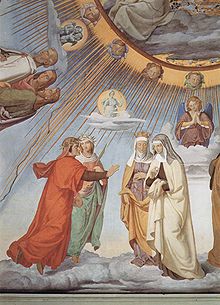






Philipp Veit (13 February 1793 – 18 December 1877) was a German Romantic painter and one of the main exponents of the Nazarene movement. It is to Veit that the credit of having been the first to revive the nearly forgotten technique of fresco painting is due.[1]
- ^ One or more of the preceding sentences incorporates text from a publication now in the public domain: Chisholm, Hugh, ed. (1911). "Veit, Philipp". Encyclopædia Britannica. Vol. 27 (11th ed.). Cambridge University Press. p. 973.